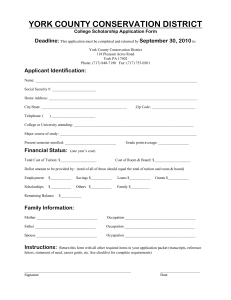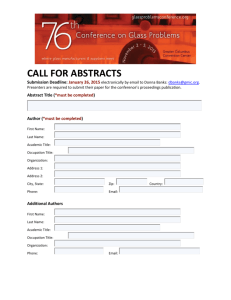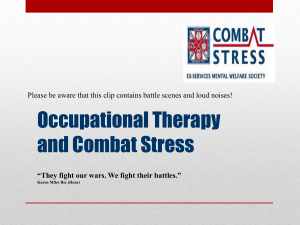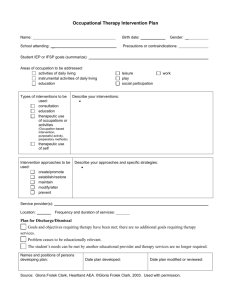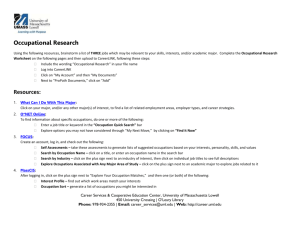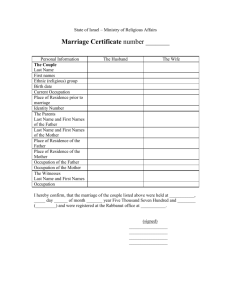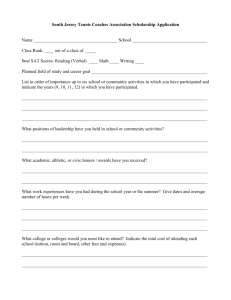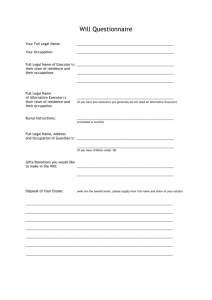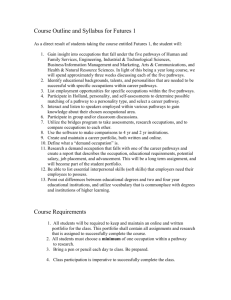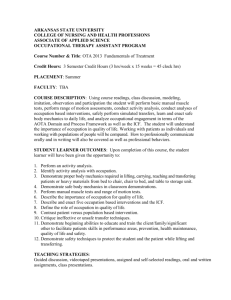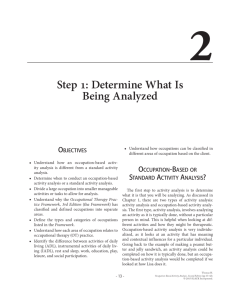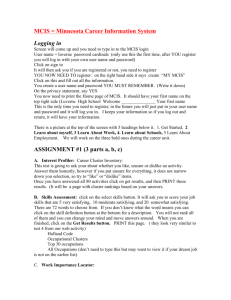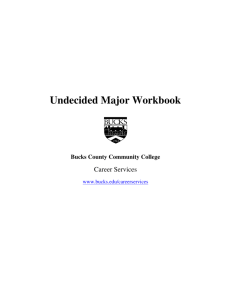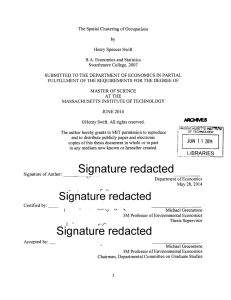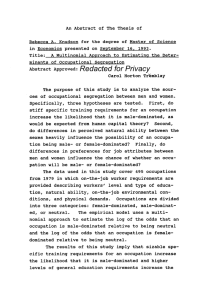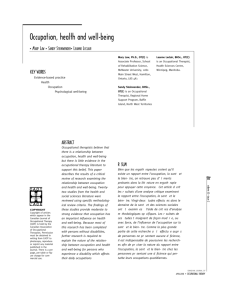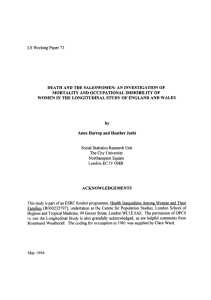PERFORMANCE AREAS ACTIVITIES OF DAILY LIVING Activities of
advertisement
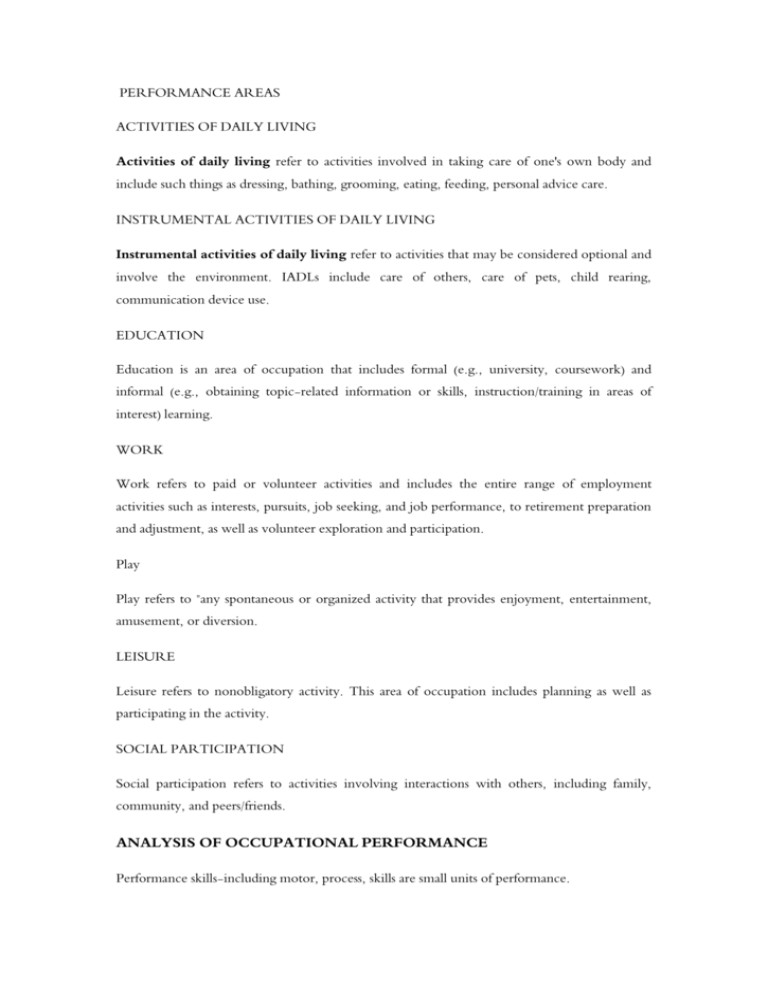
PERFORMANCE AREAS ACTIVITIES OF DAILY LIVING Activities of daily living refer to activities involved in taking care of one's own body and include such things as dressing, bathing, grooming, eating, feeding, personal advice care. INSTRUMENTAL ACTIVITIES OF DAILY LIVING Instrumental activities of daily living refer to activities that may be considered optional and involve the environment. IADLs include care of others, care of pets, child rearing, communication device use. EDUCATION Education is an area of occupation that includes formal (e.g., university, coursework) and informal (e.g., obtaining topic-related information or skills, instruction/training in areas of interest) learning. WORK Work refers to paid or volunteer activities and includes the entire range of employment activities such as interests, pursuits, job seeking, and job performance, to retirement preparation and adjustment, as well as volunteer exploration and participation. Play Play refers to "any spontaneous or organized activity that provides enjoyment, entertainment, amusement, or diversion. LEISURE Leisure refers to nonobligatory activity. This area of occupation includes planning as well as participating in the activity. SOCIAL PARTICIPATION Social participation refers to activities involving interactions with others, including family, community, and peers/friends. ANALYSIS OF OCCUPATIONAL PERFORMANCE Performance skills-including motor, process, skills are small units of performance. ENGAGEMENT IN OCCUPATION TO SUPPORT PARTICIPATION IN CONTEXT OR CONTEXTS Performance in Areas of Occupation Activities of daily living (ADL)* Instrumental activities of daily living (ADL) Education Work Play Leisure Social participation Performance Skills Performance Patterns Motor skills Process skills Communication/interaction skills Habits Routines Roles Context Activity Demands Client Factors Cultural Objects used and their properties Body functions Physical Space demands Body structure Social Social demands Personal Sequencing and timing Spiritual Required actions Temporal Required body functions Virtual Required body structures Context Definition Cultural Customs, beliefs, activity patterns, behavior standards, and expectations accepted by the society of which the individual is a member. Physical Nonhuman aspects of contexts. Includes the accessibility to and performance within environments having natural terrain, plants, animals, buildings, furniture, objects, tools, or devices Social Availability and expectation of significant individuals, such as spouse, friends, and caregivers. Personal personal context includes age, gender, socioeconomic status, and educational status. Spiritual The fundamental orientation of a person's life; that which inspires and motivates that individual. Temporal "Location of occupation performance in time". Virtual Environment in which communication occurs by means of airways or computers and an absence of physical contact. OCCUPATIONAL THERAPY PROCESS The evaluation includes an occupational profile and analysis of occupational performance. The evaluation process involves a client-centered approach; the OT practitioner is interested in the client's viewpoint, narrative, and desires. During the evaluation, the OT analyzes the client's performance skills and client factors to determine strengths and limitations for the client. INTERVENTION PLAN Once the goals and objectives have been established, the intervention approach is developed. The OTPF identifies five general approaches to intervention: create, establish, maintain, modify, and prevent. The following paragraphs describe each approach and provide a clinical example. CREATE/PROMOTE (HEALTH PROMOTION) This approach provides opportunities for people with and without disabilities. The OT practitioner sets up a program or activity in the hope that all those who participate will benefit by enhanced performance. ESTABLISH/RESTORE (REMEDIATE) The OT practitioner uses strategies and techniques to chance client factors to establish skills that have not yet developed or to restore those that have been lost. MAINTAIN This intervention approach provides support to allow the client to continue to perform in the manner in which he or she is accustomed. MODIFY (COMPENSATION, ADAPTATION) Sometimes activities are changed so that clients may continue to perform them despite poor skill level. Compensation refers to changing the demands of the activity or the way the client performs the activity. This is useful when client factors are not changeable in a practical amount of time and the client wishes to engage in the activity. PREVENT OT practitioners are interested in keeping clients well, and as such they may help clients engage in activities to prevent or slow down disease, trauma, or poor health. TYPES OF OCCUPATIONAL THERAPY INTERVENTIONS Upon determining the client's goal for therapy, the OT practitioner decides the best strategy for meeting the goals. Therapeutic use of occupations and activities refers to selecting activities and occupations that will meet the therapeutic goals. Preparatory methods. Preparatory activities should be conducted as one part of the intervention session rather than making up the entire session. Purposeful activity leads to occupation and may be a part of the occupation. Occupation-based activity refers to participation in the actual occupation, which has been found to be motivating and which results in better motor responses and improved generalization. Consultation involves a type of intervention in which practitioners use their knowledge and expertise to collaborate with the client. Education involves imparting knowledge to the client. This intervention type involves providing clients information about the occupation, but it may not result in actual performance of the occupation. OUTCOMES The OT practitioner can measure improvement or enhancement of the client's ability to carry out activities of daily living, or what is called occupational performance. As clients improve skills and perform occupations, they show improved role competence, that is, the ability to meet the demand of roles. Furthermore, clients become more able to adapt or change to varying situations. Another outcome that can be measured following occupational therapy intervention is client satisfaction. Engagement in occupations and activities impacts a client's health and wellness. Quality of life may improve and thus is considered a desired outcome of intervention.
